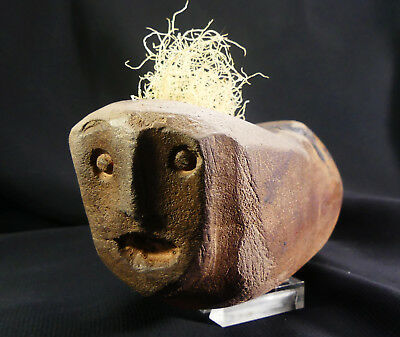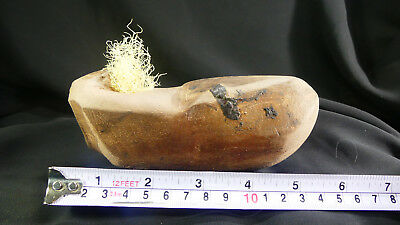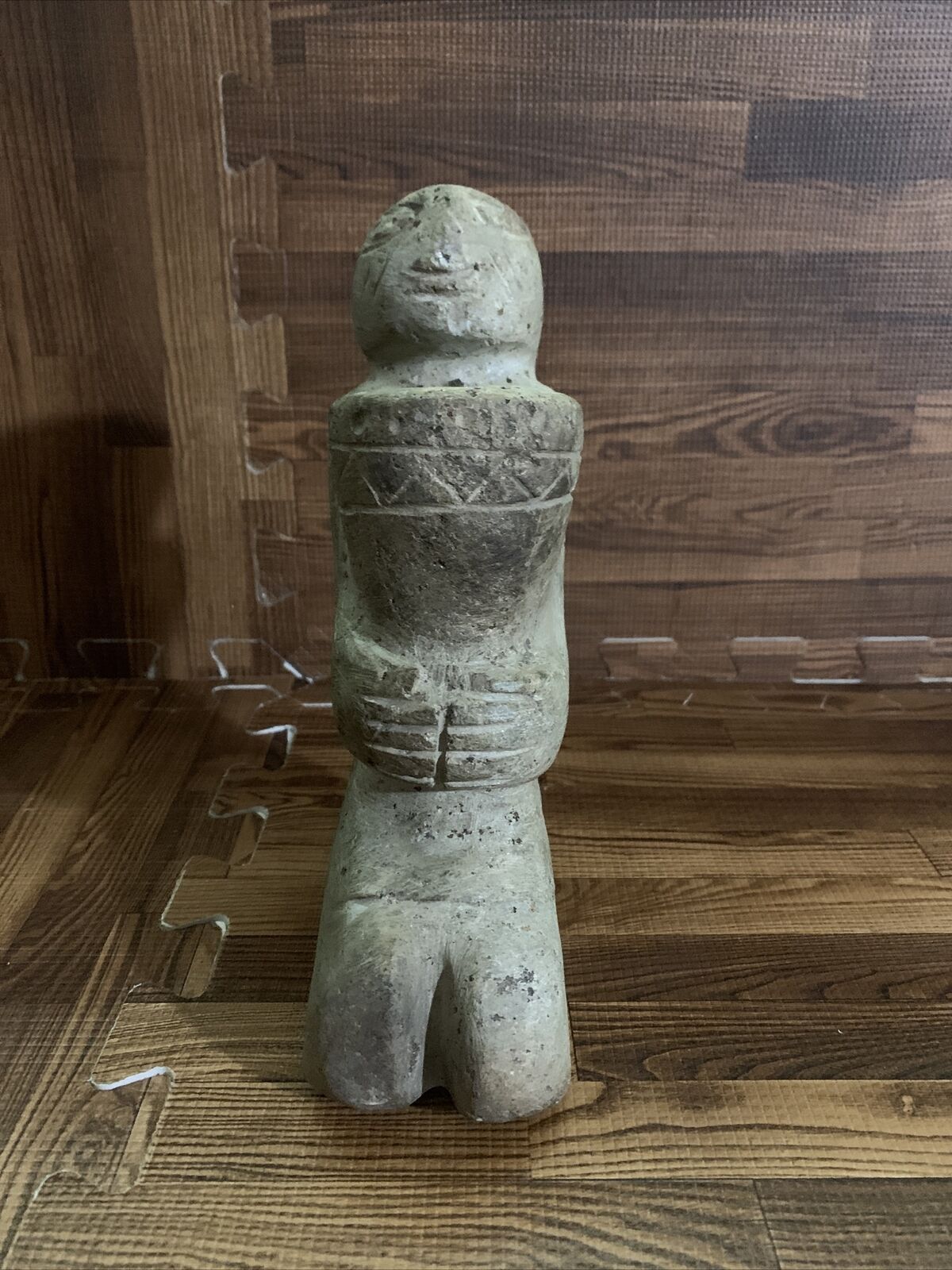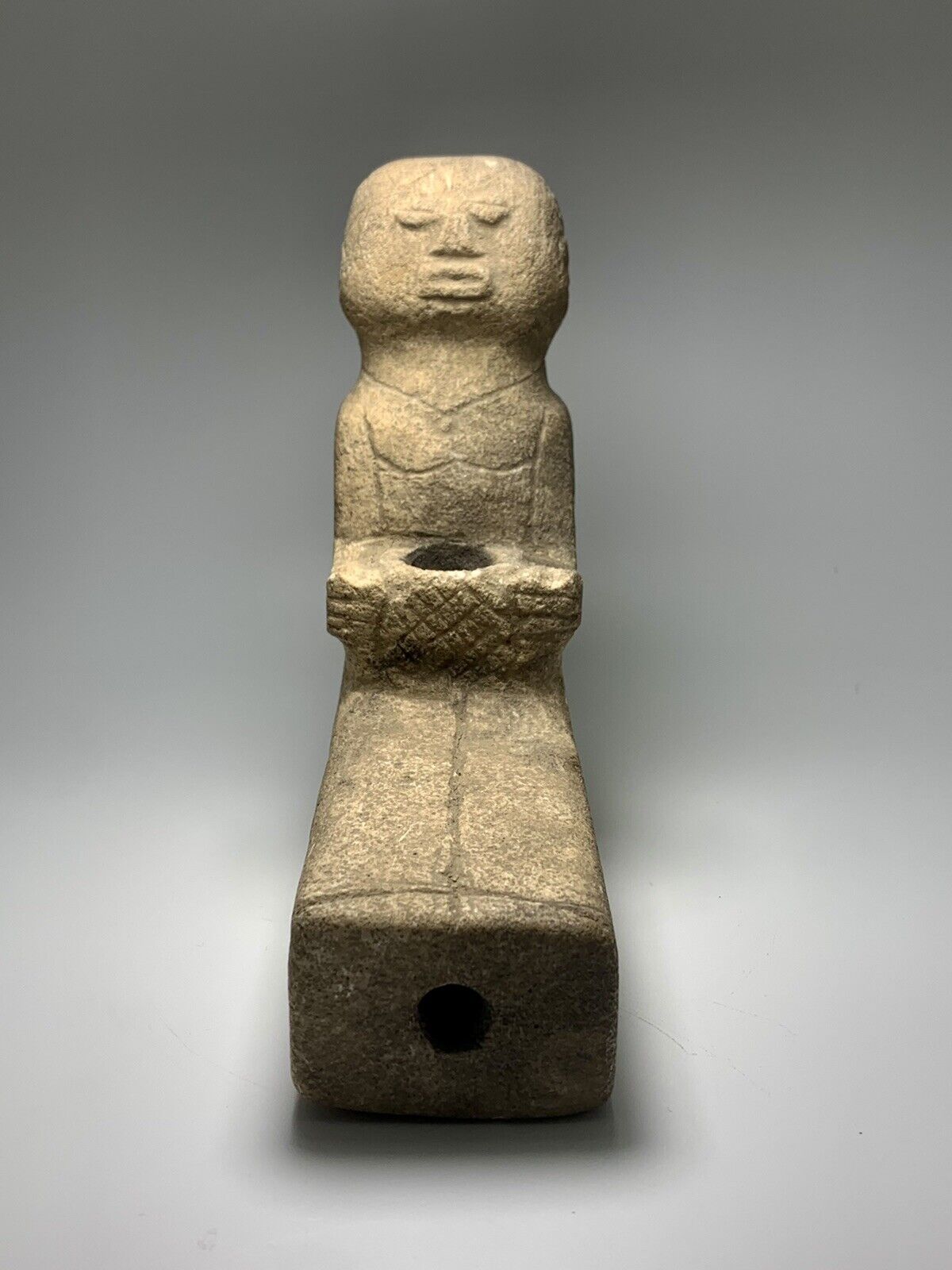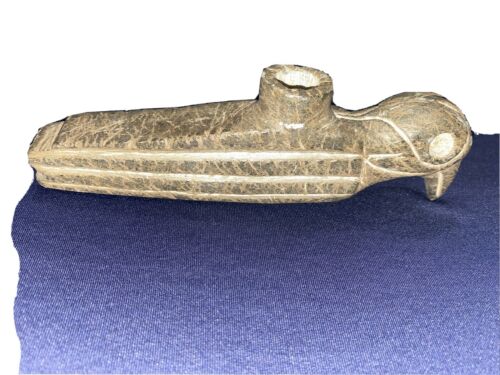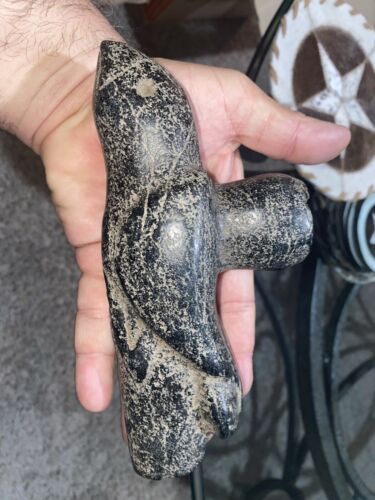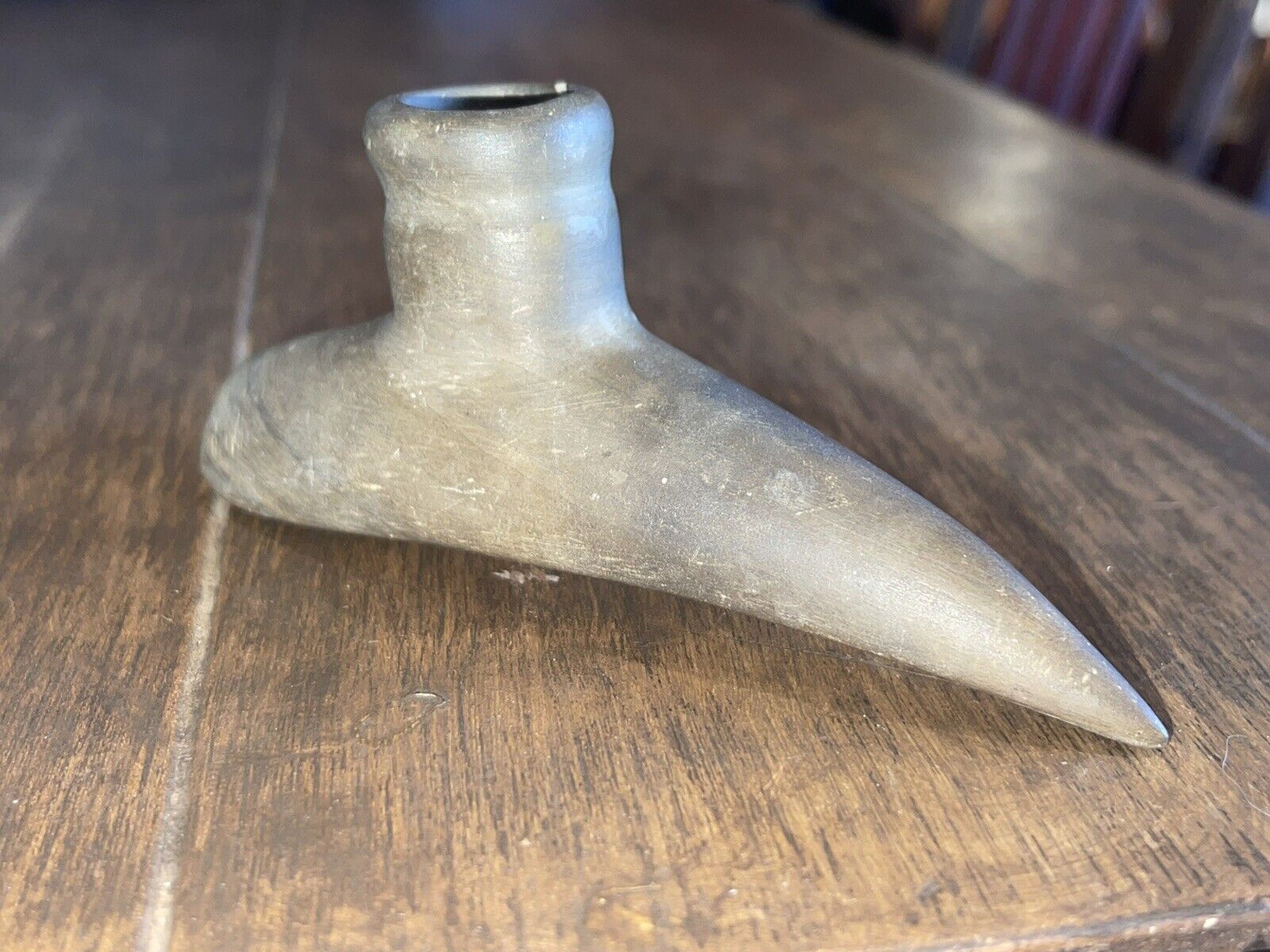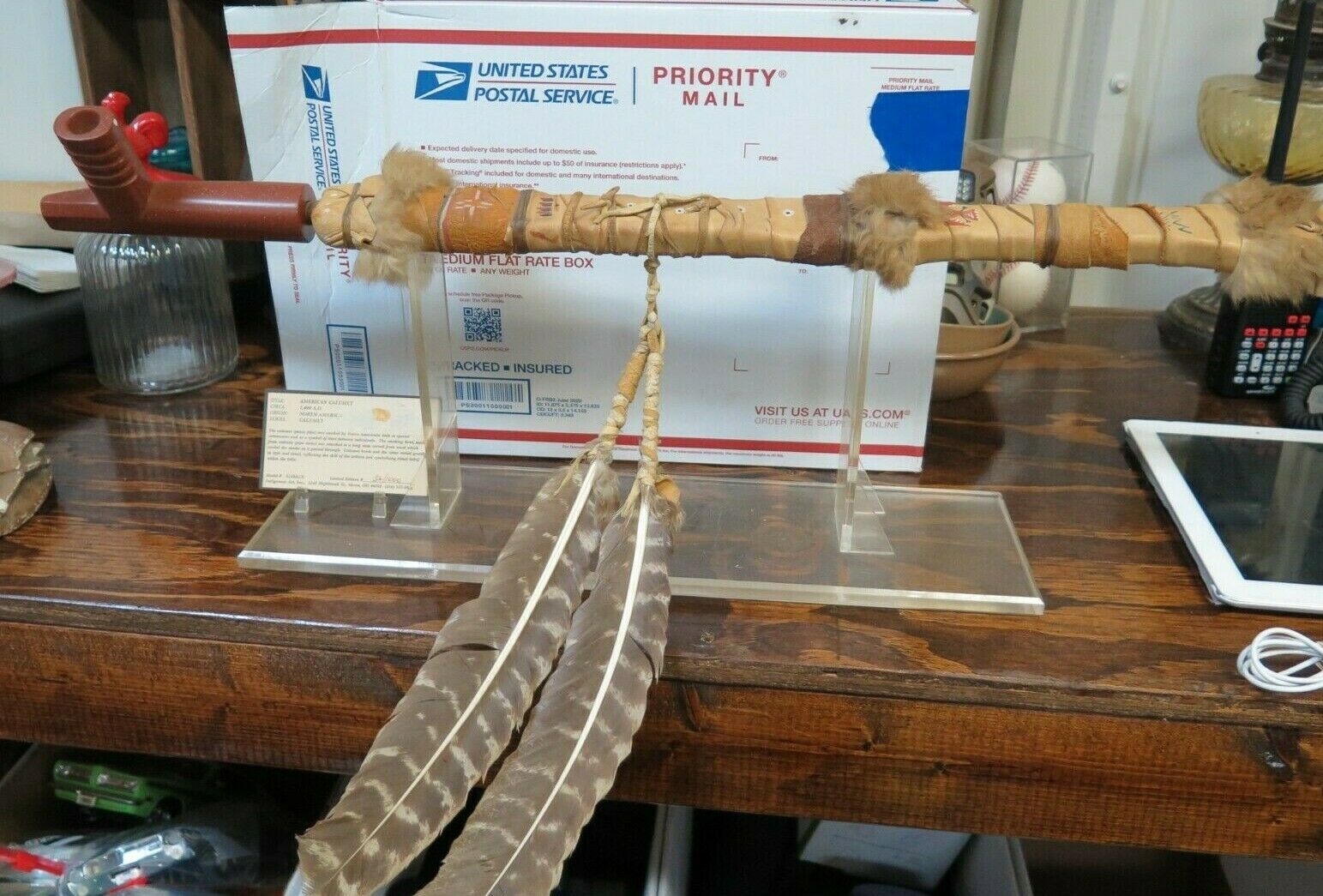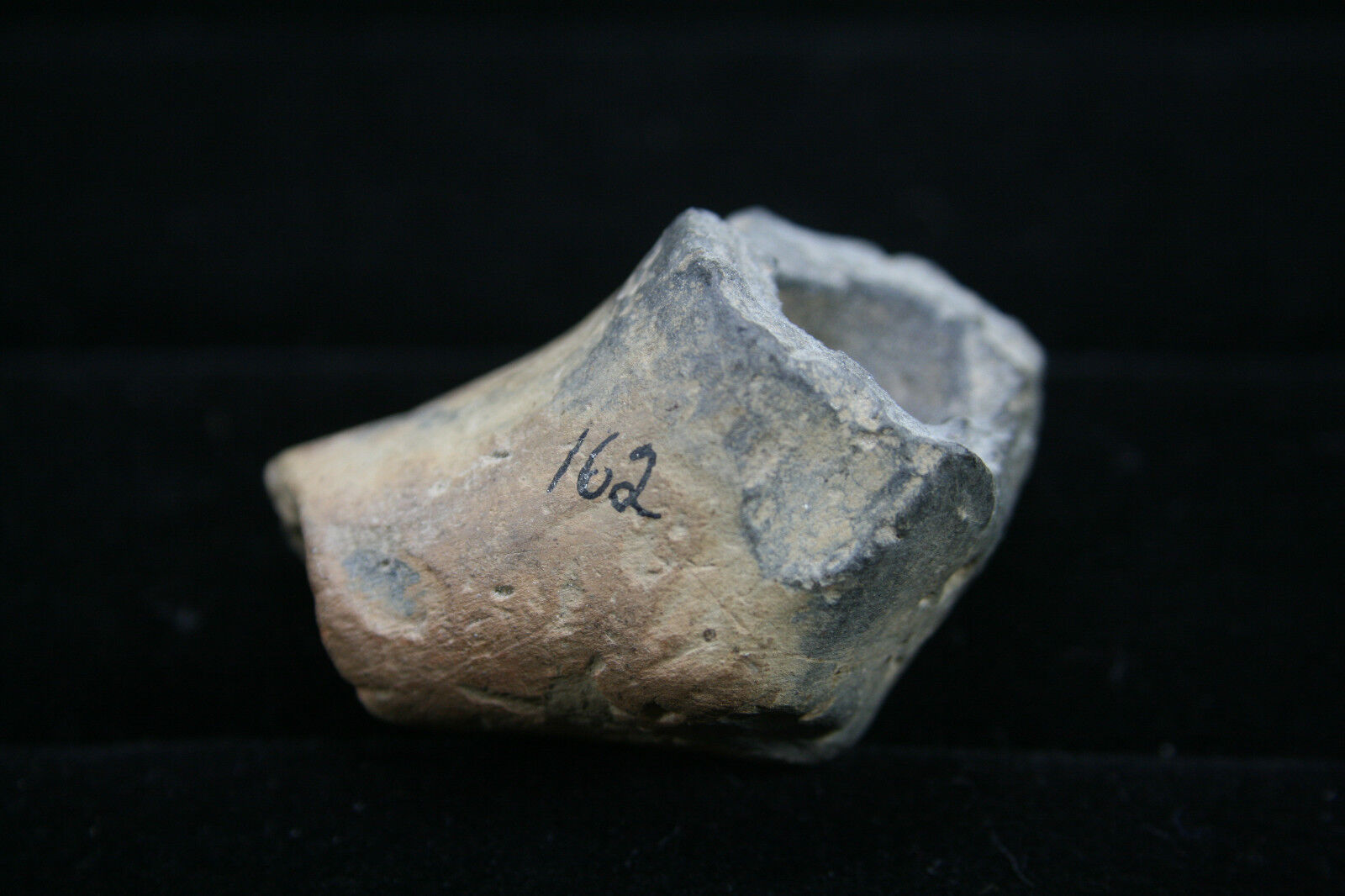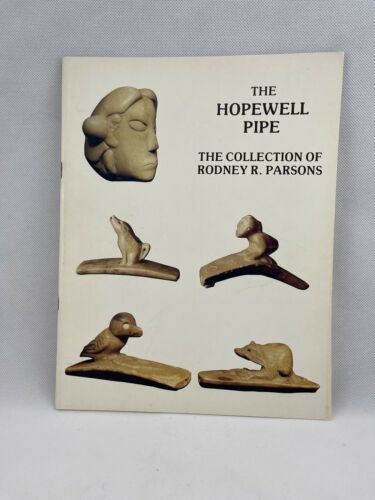-40%
RARE Ancient Native American Shaman's Stone Human Effigy Pipe! Fort Ancient,Ohio
$ 632.01
- Description
- Size Guide
Description
Houghton USAAncient Art, Antiques, & Fine
Collectibles
Ancient Native American Shaman's Stone Pipe
Ceremonial or Shaman’s Effigy Pipe
Found Near Fort Ancient, Ohio
c. 1000—1750 AD
“If one truly understands the Medicine Pipe, then one comprehends the infinite Universe,
for all is reflected in the Pipe.”
—Black Hawk
eBay Note:
I certify that this ancient artifact was legally collected on private land with the owner's permission in Ohio during the late 1800s and has been in private collections since that time.
It was a surface find and no caves, graves, or mounds were disturbed.
This is an opportunity to legally own a stunning, ancient Native American pipe that is estimated to be at least 250-years-old.
Summary:
Item: Ancient Native American Shaman’s Stone Pipe
Tribe:
Fort Ancient Culture {
Est
.
1000—1750 AD}
Material:
Sandstone
Approximate Measurements
·
Length: 5.55”
(141 mm)
·
Height: 2.02” (51 mm)
·
Width:
2.22” (57 mm)
·
Weight: 13.7 oz
(387 gr.)
Hole Diameter:
.78” (19.8 mm)
Stem Diameter: .29” (7.3 mm)
Condition: This ancient Native American pipe is in “as found” condition.
It has multiple dings, abrasion scars, some nicks and a black substance that appears to be tar, no doubt from sap that has come from burning a pine tree, is present along the top side of this intriguing pipe.
It is in museum quality condition with no repairs or restorations.
Provenance:
In the late 19
th
century, this astonishing human effigy pipe was recovered on the surface of private land near the Fort Ancient area of Ohio.
It has been in a private collection of that family in Ohio for over 100 years until it was purchased by a well-known collector/author.
Until I added it to my collection in 2018, it had been in a private collection in Boulder, Colorado, for over 20 years.
OVERVIEW
Based upon this pipe’s find location, it appears likely it was made by a Fort Ancient shaman approximately 250 to 1,000 years-ago!
The Fort Ancient culture was once thought to have been an expansion of the Mississippian cultures. It is now accepted as an independently developed culture that descended from the Hopewell culture (100 BCE–500 CE). The Fort Ancient Culture's most famous mound is called the serpent mound.
DETAILS
Its huge size suggests this stone pipe was likely used for tribal ceremonies by a shaman holy man, who would fill the bowl with special herbs and tobacco that would produce a strong narcotic effect useful as an aid in attaining stance states through which the ancestor Spirits and Sun God could be reached. {Ref. “Shamanism in North America” by Norman Bancroft Hunt, pg. 212}
Unlike modern smokers, there was little recreational use of tobacco by ancient Native Americans.
Instead, pipes like this one were used only for ceremonial and ritual purposes.
A hollow reed would have been inserted into the hole at the base of the bowl.
Effigy pipes depicting various animals were common in the Fort Ancient area, but human effigy pipes made by shaman are extremely RARE and highly collectible!
They would only have been made and used by one shaman and then cremated, “killed by breaking in two,” or buried with the shaman upon his death.
The very large, ancient pipe is shaped and carved from sandstone and shows a human face on the outward side of the smoke bowl.
This image is thought to be that of a shaman/medicine man that is speaking to the spirits.
It would have been made and used by a shaman during his spirit journeys to the astro-plane.
This pipe would have been part of the shaman’s paraphernalia that he regularly used in his spirit quests.
FORT ANCIENT
Fort Ancient the name for a Native American culture that flourished from 1000-1750 CE among a people who predominantly inhabited land along the Ohio River in areas of modern-day southern Ohio, northern Kentucky, southeastern Indiana and western West Virginia.
The significance Fort Ancient has to this region is so great, that the site could soon become a World Heritage Site — joining the likes of only 23 other World Heritage Sites in the U.S., including Yosemite National Park.
This pipe was uncovered in a field just north of the Fort Ancient hilltop complex and south of the small community of Oregonia that is located in southwest Ohio.
Oregonia is an unincorporated community in northwestern Washington Township, Warren County, Ohio, United States, on the east shore of the Little Miami River, about five miles northeast of Lebanon and six miles south of Waynesville.
Fort Ancient is a giant, hilltop enclosure in Warren County Ohio between Dayton and Cincinnati, in the woods along the Little Miami River; it is a remarkable, complex series of low-rise earthworks that were constructed by hand more than 2,000 ago. They are one of the largest remaining structures left by prehistoric Native Americans anywhere in the country.
They were built by people who probably used deer bones, stones and wooden tools to scrape earth into wicker baskets, which they dumped and stacked and shaped to form three and a half miles of walls that enclosed 126 acres on a plateau overlooking the river. Some of the walls were 50 feet wide, and up to 23 feet high.
As many as 67 breaks in the walls are now known as "gateways," which can still be seen. Some 553,000 estimated cubic yards of earth that make up the site were moved into place.
Please examine the attached photos carefully as they are part of the description and bid accordingly.
All photos taken indoors; and the stand, the dried moss in the pipe, and the ruler are not part of the sale, just there so you can better judge the size.
Note:
Each object I sell is professionally researched and compared with similar objects in the collections of the finest museums in the world.
I have been dealing in fine antiquities for almost 50 years and although certainly not an expert in every field, I have been honored to appraise, buy, collect, and enjoy and recently sell some of the finest ancient art in the world.
When in doubt, I have worked with dozens of subject matter experts to determine the condition and authenticity of numerous antiquities and antiques.
This documentation helps to insure you are buying quality items and helps to protect your investment.
I offer a full
Money-Back Guarantee
if a recognized authority in antiquities disputes the authenticity of this fine artifact.
Please ask any questions you may have
before
you bid!
All sales are Final, unless I have seriously misrepresented this item!
Please look at the macro photos carefully as they are part of the description.
Member of the Authentic Artifact Collectors Association (AACA) & the Archaeological Institute of America (AIA)
Per e-Bay's rules,
PayPal
only please!
FREE USA SHIPPING includes insurance and is accurate for all 50 States!
Note: Only Washington State buyers are responsible for the Washington State sales tax.
